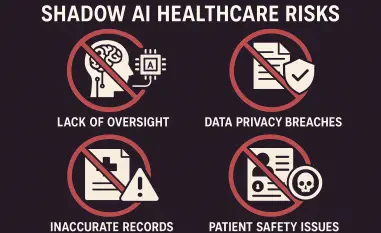In today’s digital landscape, securing web servers has become a paramount challenge due to the ever-evolving threats posed by cyberattacks. One critical vulnerability that jeopardizes web server security is the path traversal flaw, which can lead to unauthorized access and significant data breaches. This article explores the current state of web server security, focusing on path traversal vulnerabilities, their implications, and the measures to mitigate these threats.
Understanding Web Server Security Landscape
Web servers play a crucial role in the digital ecosystem, serving not only as the backbone for websites but also as vital protectors of data privacy. The importance of web server security cannot be overstated, as they are integral to safeguarding sensitive information and ensuring the confidentiality and integrity of communication over the internet. Effective web server security involves numerous stakeholders, including IT professionals, cybersecurity experts, and regulatory bodies, all working together to detect and neutralize potential threats. Data protection and privacy hinge on how well these servers are fortified against attacks.
Path Traversal Flaws Explained
Nature and Mechanics of Path Traversal Vulnerabilities
Path traversal, also known as directory traversal, is a type of vulnerability where an attacker manipulates the file path to access files and directories outside the intended scope. This kind of attack exploits inadequate input validation mechanisms, allowing attackers to gain access to restricted directories. Often, targets are files containing sensitive information, such as configuration files or credentials, which can lead to unauthorized access and manipulation of sensitive data.
Identifying Vulnerable Systems and Scenarios
Systems vulnerable to path traversal often share common characteristics, such as poor implementation of input sanitization and flawed configuration settings. Several high-profile incidents have highlighted the repercussions of such vulnerabilities, where attackers leveraged path traversal flaws to access sensitive data. Recognizing these scenarios is vital for devising appropriate defenses and reinforcing security protocols.
Industry Trends and Data on Web Server Security
Evolving Threat Landscape and Technology Measures
The threat landscape for web servers continues to evolve, with path traversal attacks gaining prominence. As attacks become more sophisticated, defensive technologies and practices are emerging to counteract these threats. These include fortified input validation techniques, regular security audits, and leveraging advanced web application firewalls to detect and prevent malicious requests.
Statistical Insights and Future Projections
Recent data indicate a significant prevalence of path traversal vulnerabilities, underscoring the urgency for heightened awareness and preventive measures. Projections suggest that without robust defense mechanisms, such vulnerabilities will continue to pose severe risks. As these threats are expected to evolve, staying ahead requires continual adaptation and innovation in security practices.
Challenges and Solutions in Mitigating Path Traversal Flaws
Preventing path traversal attacks poses technological challenges, particularly in achieving comprehensive input sanitization. Best practices in server configuration, such as minimizing publicly accessible directories and regularly updating server software, are critical in mitigating these threats. The significance of applying patches and updates promptly cannot be understated, as these measures form the frontline of defense against potential exploitation.
Regulatory Environment and Compliance Requirements
The security of web servers is also heavily influenced by regulatory requirements and standards, which dictate best practices for protecting sensitive data. Industry regulations, such as the General Data Protection Regulation (GDPR) and the Payment Card Industry Data Security Standard (PCI DSS), compel organizations to adhere to certain security protocols. Compliance with these standards acts as a fundamental pillar for implementing robust security measures, supported by industry groups and government bodies.
Future Directions and Innovations in Web Server Security
Looking ahead, advancements in technologies are expected to redefine web server security. Innovations such as artificial intelligence and machine learning present promising avenues for enhancing threat detection and response. Emerging trends highlight the increasing role of automated systems in bolstering defenses against vulnerabilities. Additionally, as consumer demand for improved privacy protection rises, security measures will transform to meet these evolving expectations.
Conclusion and Industry Outlook
In the face of persistent threats posed by path traversal flaws, the industry needs to advance toward a proactive security posture. By prioritizing robust input validation, enhancing server configuration practices, and staying abreast of regulatory compliance, organizations can protect themselves better against these vulnerabilities. As technological advances take shape, the focus must shift toward innovative solutions that anticipate and neutralize future threats. The commitment to continuous improvement in web server security will ultimately determine the industry’s ability to safeguard digital landscapes effectively.













